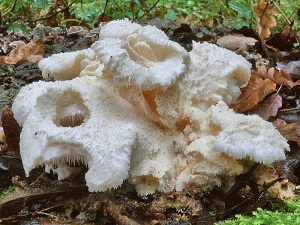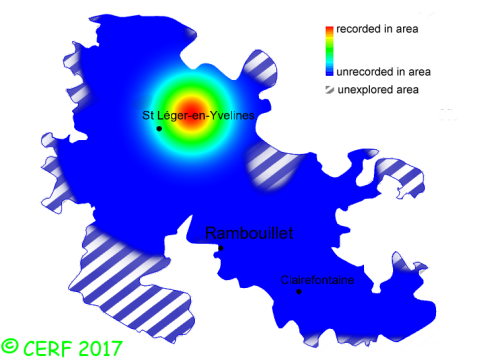| Hericium cirrhatum (Pers.) Nikol. |
|
|
|
|
|
|
The fruiting body is composed of irregular and imbricated bracket-like caps, growing laterally, white, ochraceous with age, without stem. The flesh is thick, firm, pale to pale orange, soft then slightly rubbery with age; its taste is mild; the odour is pleasant. The fertile surface is composed of creamy white spines, more or less long (between 5 and 15mm). The spore print is white (amyloid and smooth spores).It grows on wood, in old forests or woodlands, on rotting wood, on birch, willow, trembling poplar, beech, oak. The fruiting period takes place from July to December.
Chemical tests : none. Distinctive features : white fruiting body composed of irregular, more or less flat, bracket like caps, with short sterile spines on the top, and rather long and pendulous spines (5-15mm) on the fertile under-cap surface; firm and soft flesh; on dead deciduous wood Hericium cirrhatum is rare and confined in the forest of Rambouillet, and is quite rare, more generally speaking . | ||
|
page updated on 14/01/18

